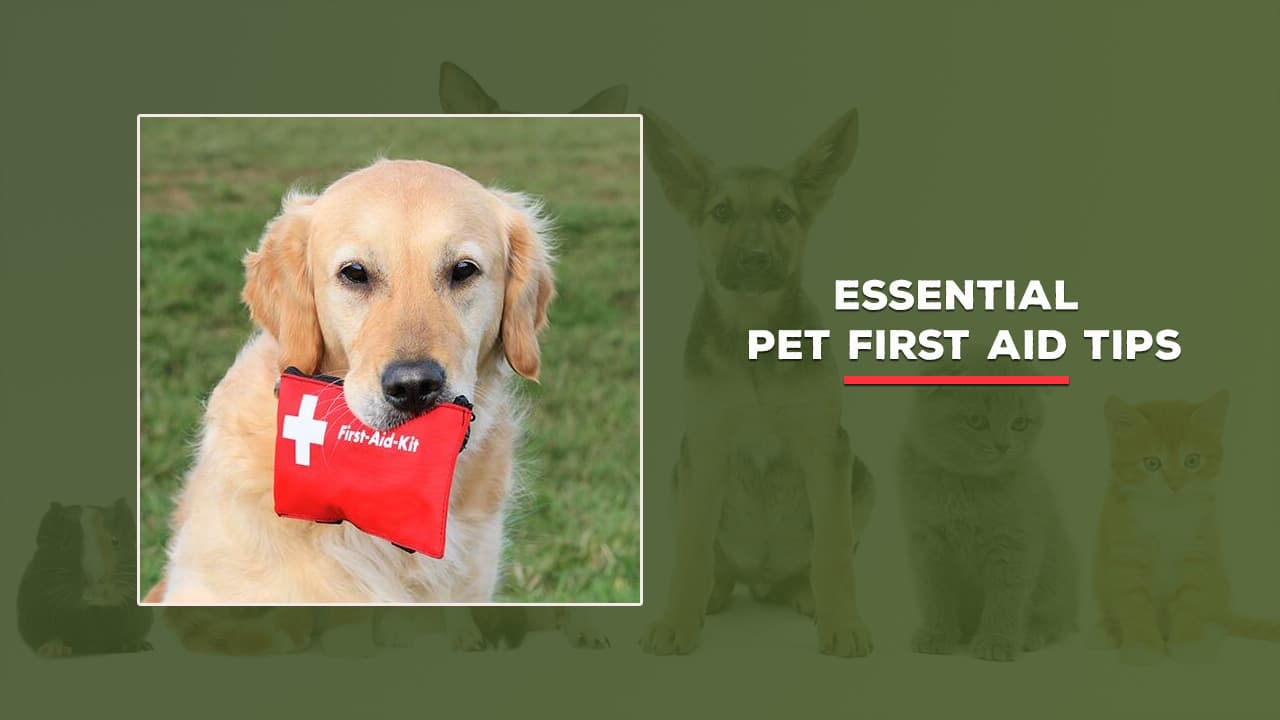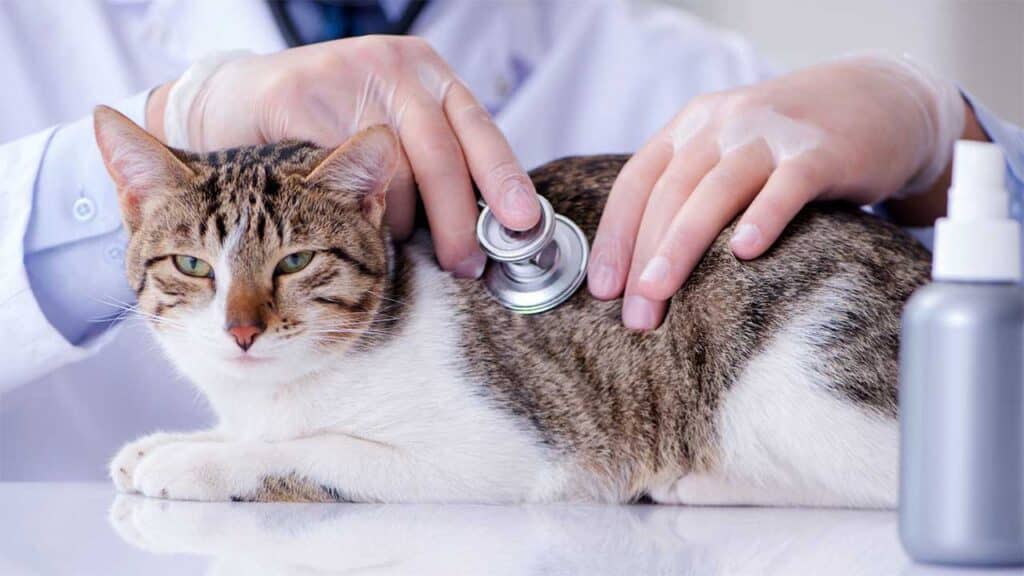Pet emergencies can happen anytime, so being prepared is crucial for keeping your furry friends safe. Knowing basic pet first aid can make a big difference in urgent situations. Having the right supplies and skills can help you handle pet emergencies until you can get professional veterinary care.
A pet first aid kit is an essential tool for all pet owners. It should contain important items like bandages, antiseptic wipes, and tweezers.
Familiarizing yourself with common pet emergencies and how to respond can give you confidence if something happens to your pet. With some basic knowledge and preparation, you’ll be ready to help your pet when they need it most.
Understanding Pet First Aid
Pet first aid skills can save your furry friend’s life in an emergency. Knowing how to respond quickly and correctly is crucial for any pet owner.
Importance of Pet First Aid
Learning pet first aid helps you handle emergencies before reaching a vet. It can prevent minor issues from becoming big problems. Pet first aid skills give you the confidence to act when your pet needs help most.
Keep a pet first aid kit handy. Include items like gauze, nonstick bandages, and clean towels. Store the kit where you can grab it fast. Make sure family members know where it is, too.
Knowing how to check vital signs is critical. Learn to take your pet’s pulse and breathing rate. This information helps vets assess the situation over the phone.
Common Pet Emergencies
Cuts and bleeding are frequent issues. Apply direct pressure with a clean cloth to stop bleeding. For deep cuts, keep pressure on while you head to the vet.
Choking is scary but treatable. If your pet can’t breathe, try the Heimlich maneuver. For small pets, hold them upside down. For bigger ones, use quick chest thrusts.
Heatstroke is a summer danger. Move your pet to an excellent spot. Wet their fur with cool (not cold) water. Offer small sips of water if they’re alert.
Poisoning needs fast action. Call the pet poison hotline right away. Don’t make your pet vomit unless told to by a pro.
Preparation And Prevention
Being ready for pet emergencies can save lives. Proper planning and safety measures are vital to keeping your furry friends safe and healthy.
Creating A Pet First Aid Kit
A well-stocked pet first aid kit is crucial. Here’s what to include:
- Gauze and bandages
- Scissors and tweezers
- Clean towels
- Hydrogen peroxide
- Digital thermometer
- Pet-safe antiseptic wipes
- Spare leash and collar
- Self-adhering tape
Keep your kit in an easy-to-reach spot. Check it regularly to replace expired items. Add any special items your pet might need, like extra medication.
Pet Safety Measures
Taking steps to prevent accidents is as important as being ready for them. Here are some essential safety tips:
- Keep toxic plants and foods out of reach
- Secure loose wires and cords
- Use pet gates to block off dangerous areas
- Always use a leash during walks
- Make sure your yard is fenced securely
- Keep small objects that could be swallowed off the floor
- Store cleaning products and medications in locked cabinets
Regular vet check-ups are vital. They help catch health issues early. Keep your pet’s vaccinations up to date. This protects against many serious illnesses.
1. Learn CPR
Knowing how to perform CPR on your pet can be a lifesaver. CPR stands for cardiopulmonary resuscitation. It’s a crucial skill that can help save your pet’s life in an emergency.
Start by checking if your pet is breathing. Look for chest movement and feel for air from their nose. If there’s no breathing, begin CPR right away.
For dogs, lay them on their right side. Place one hand over the other on the broadest part of the chest. Push down about one-third of the chest width. Do this at a rate of 100-120 compressions per minute.
For cats and small dogs, use one hand to compress the chest. For larger dogs, use both hands. After 30 compressions, give two rescue breaths. Gently close your pet’s mouth and breathe into their nose.
Cycles of 30 compressions and two breaths should be performed until your pet starts breathing or you reach the vet. Remember, CPR is not a substitute for veterinary care. It’s a temporary measure to keep blood flowing until you can get professional help.
Practice CPR techniques on a stuffed animal. This can help you feel more prepared if a real emergency happens. Consider taking a pet first aid class to learn proper techniques from a professional.
2. Stop Bleeding
Quick action is critical when your pet is bleeding. First, stay calm. Your pet can sense your stress.
Find the source of the bleeding. Apply firm pressure using a clean cloth or gauze. Hold it there for several minutes.
Don’t remove the cloth if it gets soaked. Add more layers on top. Lifting the fabric may disrupt clotting.
For leg wounds, wrap a bandage snugly above the injury. This slows blood flow. Don’t leave it on for more than 15 minutes at a time.
If bleeding doesn’t stop, seek vet care right away. Some wounds need stitches or other treatment.
Keep your pet still and warm while you work. This helps prevent shock.
Remember, deep cuts or heavy bleeding always need a vet’s attention. Don’t wait if the bleeding is severe.
3. Muzzle Your Pet
Muzzling your pet can be a crucial safety measure in emergencies. It helps protect you and others from potential bites when your pet is scared or in pain.
Always keep a muzzle in your pet’s first aid kit. You can make a temporary muzzle using gauze or a soft cloth if you don’t have one.
Remember, never muzzle your pet if they’re vomiting. This could be dangerous and lead to choking.
When applying a muzzle, be gentle and calm. Speak softly to your pet to help them feel at ease. Ensure the muzzle isn’t too tight and allows your pet to pant.
Even the friendliest pets can bite when they’re hurt or frightened. By muzzling your pet, you keep everyone safe while providing care or transporting them to the vet.
Practice putting the muzzle on your pet when they’re calm. This will help them get used to it and make emergencies less stressful.
Remove the muzzle as soon as it’s safe to do so. Your pet needs to be able to pant and drink water to stay comfortable.
4. Check Vitals
Knowing how to check your pet’s vital signs is crucial in an emergency. You should learn to measure their heart, breathing, and temperature.
For heart rate, place your hand on your pet’s chest behind their left elbow. Count the beats for 15 seconds and multiply by 4. Average rates vary by species and size.
To check breathing, watch your pet’s chest rise and fall. Count breaths for 15 seconds and multiply by 4. Rapid or labored breathing can signal distress.
Take your pet’s temperature rectally with a digital thermometer. The average temperature for dogs and cats is 100.5-102.5°F (38-39.2°C). Higher or lower temps may indicate problems.
Practice these checks when your pet is healthy. This will help you notice changes in an emergency. Keep a record of your pet’s typical vital signs for reference.
5. Perform the Heimlich Maneuver
The Heimlich maneuver can save your pet’s life if they’re choking. For large dogs, stand behind them and wrap your arms around their chest. Place a fist with one hand just above the belly button. Cover your fist with your other hand.
Push up and forward into your dog’s stomach with quick, firm thrusts. Repeat until the object comes out. Hold small dogs or cats with their back against your chest. Use the heel of your hand to give quick pushes to their belly, just below the ribcage.
Be careful when helping a choking pet. They might bite out of fear or panic. If the Heimlich doesn’t work right away, don’t waste time. Take your pet to a vet immediately—every second counts when your pet can’t breathe.
Remember to check your pet’s mouth after each thrust. You can see and remove the object that’s blocking their airway. Always follow up with a vet visit after a choking episode, even if you successfully remove the object.
6. Treating Burns
Burns can be scary for both you and your pet. Quick action is critical. Start by cooling the burn with room temperature water for at least 10 minutes. Don’t use ice or icy water, which can hurt the skin more.
For minor burns, gently clean the area with saline solution. You can apply a pet-safe burn ointment if you have it. Cover the burn loosely with a non-stick bandage to keep it clean.
Chemical burns need special care. Rinse the area thoroughly with water. Bring the chemical container to the vet if possible so they know what caused the burn.
Always keep your pet warm while treating burns. Wrap them in a blanket, but don’t let it touch the burned area. Even if the burn looks small, having a vet check it out is best.
Severe burns need immediate vet care. Keep the burn relaxed and covered while waiting to get to the vet. Stay calm and reassure your pet. Proper treatment can make a big difference in your pet’s recovery.
7. Handling Fractures
If your pet suffers a fracture, stay calm and act quickly. First, keep your pet still to prevent further injury. Don’t try to move them unless necessary.
Call your vet right away for guidance. They may advise you to bring your pet in immediately.
If you need to transport your pet, use a firm, flat surface like a board or sturdy box. This helps keep the injured area stable.
Gently wrap the injured limb in a soft towel or blanket. Don’t try to set the bone or apply a splint yourself.
Cover the area with a clean cloth for open fractures where the bone is visible to prevent infection. Don’t apply any ointments or medications.
Keep your pet warm and comfortable during transport. Speak softly to reassure them.
Remember, even the gentlest pet may bite when in pain. Consider using a muzzle if needed, but only if your pet can breathe easily.
Never give your pet pain medication meant for humans. It can be dangerous. Let your vet handle pain management.
8. Dealing with Seizures
Seizures in pets can be scary, but knowing how to respond is crucial. If your pet has a seizure, stay calm and keep them safe.
Clear the area around your pet. Move furniture and objects they could bump into. This prevents injuries during the seizure.
Don’t try to hold your pet down or put anything in their mouth. This can hurt them or you. Just let the seizure run its course.
Keep the room quiet and dim. Bright lights and loud noises can make the seizure last longer. Speak softly to your pet if needed.
Time the seizure if you can. Most last only a few minutes. Call your vet immediately if it goes on for more than 5 minutes.
After the seizure, your pet may seem confused. Keep them calm and comfortable. Give them water if they want it.
Call your vet once your pet is stable. They’ll want to know about the seizure and may need to see your pet.
If your pet has never had a seizure, check them out. It could be a sign of a severe health issue.
9. Poison Response
Quick action is vital if you think your pet has eaten something toxic. Keep your pet calm and immediately call your vet or a pet poison hotline.
Don’t try to make your pet vomit unless a professional tells you to. Some poisons can cause more harm to come back up.
Remove any remaining poison from your pet’s fur or skin. Wear gloves and wash the area with lukewarm water for 15 minutes.
If the poison gets in your pet’s eyes, flush them gently with water for 15 minutes. Hold your pet’s eyelids open while you do this.
Save any packaging or samples of the poison. This helps vets know what treatment your pet needs.
Watch for symptoms like vomiting, drooling, or trouble breathing. Tell the vet about any changes you notice.
Keep dangerous items out of reach. Common pet poisons include chocolate, medications, and cleaning products. Prevention is the best medicine.
10. Treating Shock
Shock is a severe condition that can happen to pets during emergencies. It’s essential to know how to spot and treat it quickly.
Look for signs of shock in your pet. These include pale gums, fast breathing, and weakness. Your pet might feel cold to the touch.
If you think your pet is in shock, act fast. Gently lay them on their right side. This helps blood flow to essential organs.
Keep your pet warm. Use a blanket or coat to cover them. Be careful not to overheat them, though.
Raise your pet’s back end slightly. You can use a folded towel or blanket. This helps blood flow to the heart and brain.
Stay calm and speak softly to your pet. This can help reduce their stress. Stress can make shock worse.
Call your vet right away. The shock is severe and needs professional care. Follow their advice on what to do next.
Don’t give your pet anything to eat or drink. This could be dangerous when they’re in shock.
Start heading to the vet while keeping your pet warm and comfortable. Quick treatment is vital for the best outcome.
Summary
Being prepared for pet emergencies can save your pet’s life. Knowing how to perform essential first aid, from CPR to stopping bleeding and handling fractures, equips you to act swiftly and effectively in critical situations.
Regularly updating and checking your pet first aid kit ensures you’re always ready to handle common pet emergencies. Understanding and practicing these first aid steps provides immediate relief to your pet and bridges the gap until professional veterinary care is available.
Remember, your calm and knowledgeable response can make all the difference in your pet’s recovery and well-being. Make it a priority to familiarize yourself with these vital skills and to keep your first aid supplies accessible and up-to-date.
Doing so ensures that you are always ready to provide the best care possible for your furry friend in times of need.








































